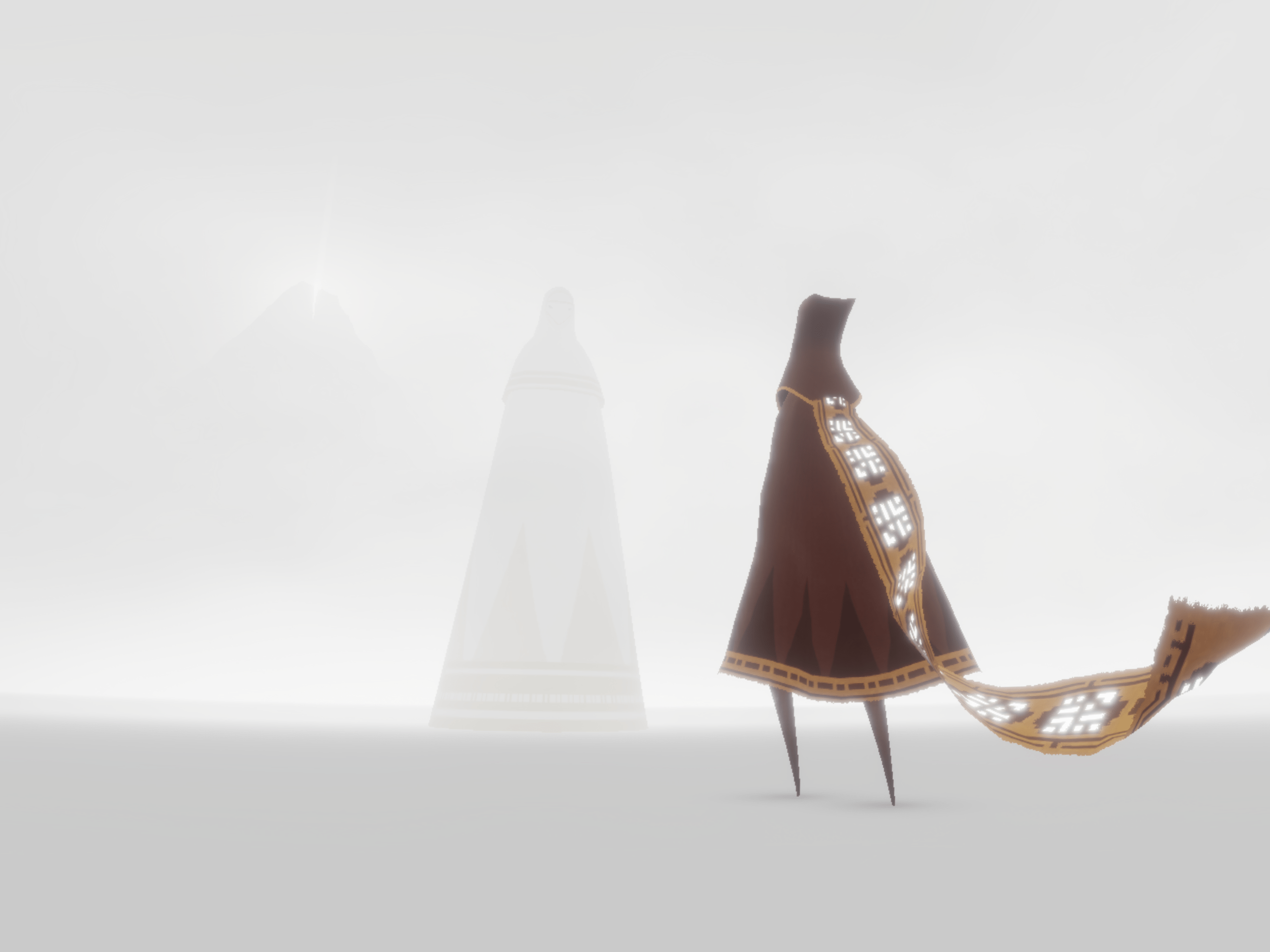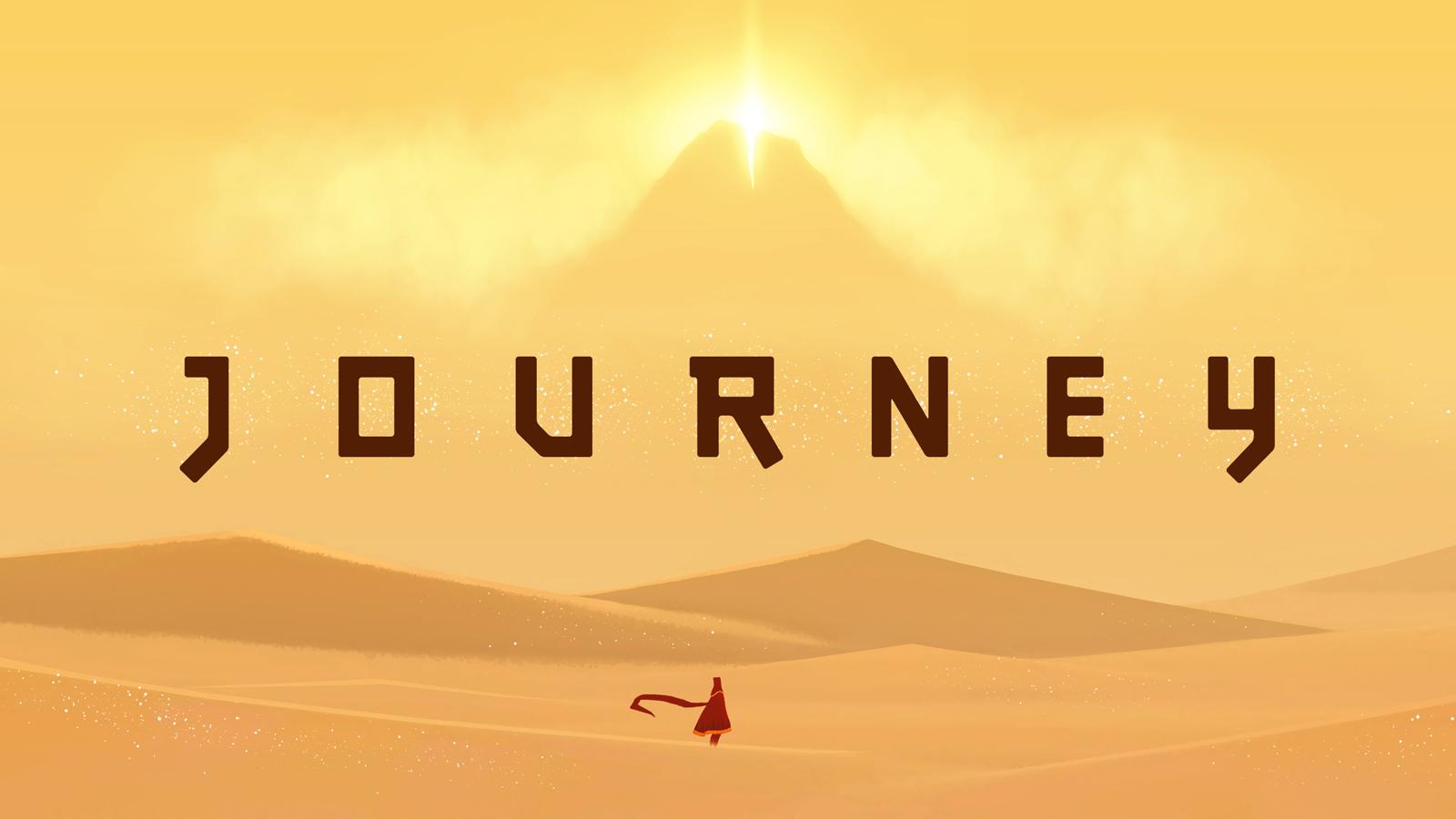Journey
Designers: Jenova Chen, Robin Hunicke, Nicholas Clark, Chris Bell, Bryan Singh
Platform: iOS, PS3, PS4, PC
For this critical play I played Journey on my iPad. While the App Store advertises this game as 4+ and it has no particularly scary, violent, or inappropriate content, I feel like this game is aimed at a bit older of an audience like 12+. That is because this game is almost meditative in nature, making me wonder if younger kids with a shorter attention span would enjoy it.
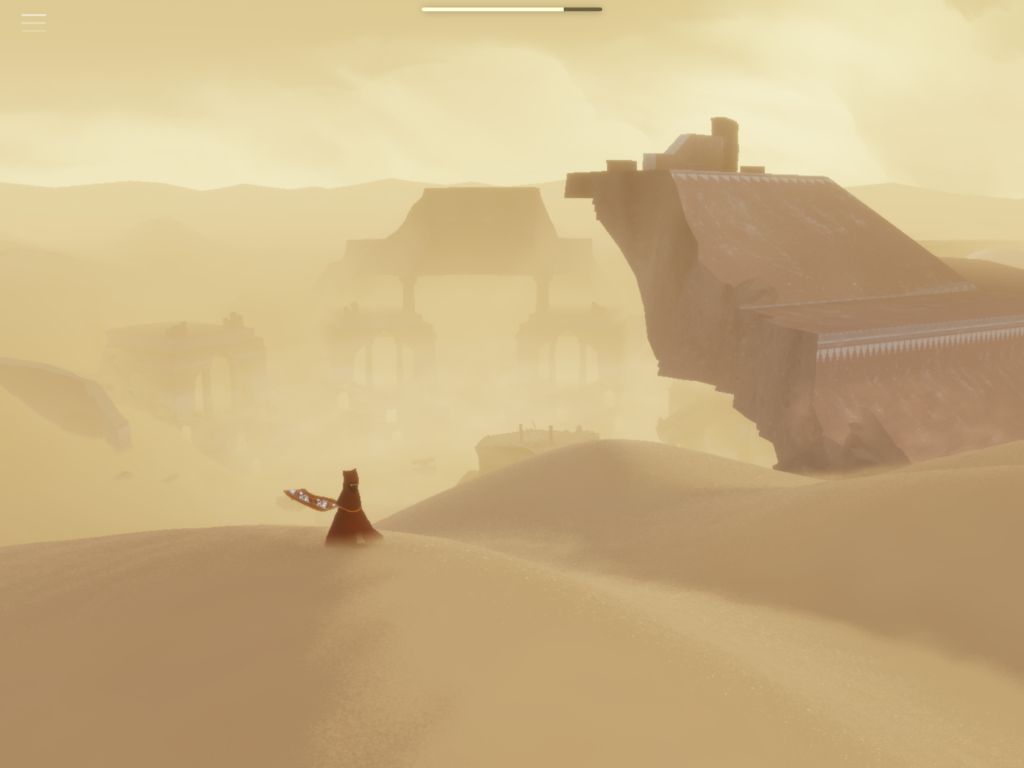
This meditative nature felt specifically crafted. The pace of the running physically forced you to slow down. At first, I found the game too slow, I felt myself getting antsy to advance the story along and figure out what was going on and almost considered stopping the game on the first level. However, I forced myself to focus my attention away from the big picture and towards what information the game is providing me in this very moment and how can it advance me forward. I had to accept that I was gonna have to spend sometime running across the sand to reach where you want to go and that is an intentional part of the experience. In a way that pace of the running and the expansiveness of the landscapes reinforced that the game is about learning to enjoy the journey not figuring out the destination right away. Accepting this allowed me to begin to appreciate the beautiful landscape I got to explore, the emotional score, and even the satisfying sound of the character’s feet running against the sand.
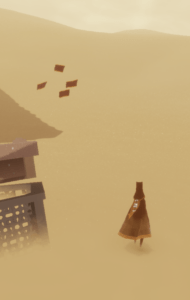 This shift in focus made me more aware of the ways in which the game guides the player around the landscapes and teaches them the core mechanics. The game built me up from the bare bones. While a bit disorienting, I really like that I was immediately dropped into the game and had to learn as I went through a series of game loops. At first I learned running running, and then it became running and jumping. Eventually I was introduced to floating ribbons that powered me up to fly, and then I found bigger ribbons that transformed into bridges, and on the last loop I played the big ribbons turned into flying sting ray-esque ribbon-beings that lead me to the relevant areas of the landscape.These flying beings were my favorite mechanism because they gave me direction. While the vast, hazy atmosphere was incredibly beautiful, at times I found it hard to decipher what I was supposed to do and felt like I was “wasting time” running all around the landscape looking for any clue to what I should do next. This is also when I was introduced to the mechanism of the wind. The wind acted as a nudge to the player to turn around to keep them from straying too far from the intended area of play. I really loved this mechanism because it felt natural to the landscape and created a feeling of resistance, as if the game was resisting the player when they tried to do something wrong. In the other sense, whenever I did something right it felt like the game was gliding with me. An example of this is when I started traveling in the right direction sometimes the wind would help me surf the sand and move faster. In the beginning levels I encountered the wind a lot, but by my final level, the combination of my increased understanding of the game and flying beings made the game flow more seamless. I found myself getting very immersed in the game, unintentionally spending 2.5 playing it.
This shift in focus made me more aware of the ways in which the game guides the player around the landscapes and teaches them the core mechanics. The game built me up from the bare bones. While a bit disorienting, I really like that I was immediately dropped into the game and had to learn as I went through a series of game loops. At first I learned running running, and then it became running and jumping. Eventually I was introduced to floating ribbons that powered me up to fly, and then I found bigger ribbons that transformed into bridges, and on the last loop I played the big ribbons turned into flying sting ray-esque ribbon-beings that lead me to the relevant areas of the landscape.These flying beings were my favorite mechanism because they gave me direction. While the vast, hazy atmosphere was incredibly beautiful, at times I found it hard to decipher what I was supposed to do and felt like I was “wasting time” running all around the landscape looking for any clue to what I should do next. This is also when I was introduced to the mechanism of the wind. The wind acted as a nudge to the player to turn around to keep them from straying too far from the intended area of play. I really loved this mechanism because it felt natural to the landscape and created a feeling of resistance, as if the game was resisting the player when they tried to do something wrong. In the other sense, whenever I did something right it felt like the game was gliding with me. An example of this is when I started traveling in the right direction sometimes the wind would help me surf the sand and move faster. In the beginning levels I encountered the wind a lot, but by my final level, the combination of my increased understanding of the game and flying beings made the game flow more seamless. I found myself getting very immersed in the game, unintentionally spending 2.5 playing it.
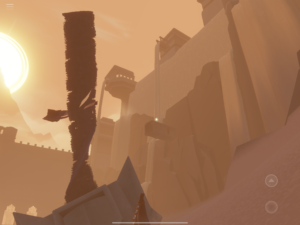
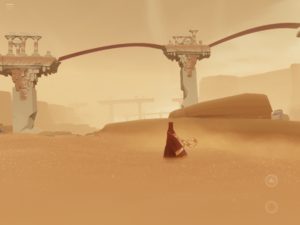
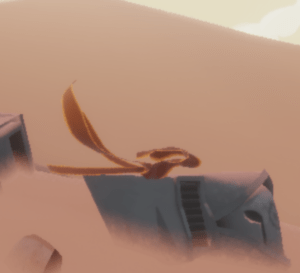
The last thing I was struck by the lack of dialogue or writing. The game effectively communicated solely through sound, visuals, and game play. I found that really striking, especially since this was my first “walking sim”, I expected a lot of story communicated through writing or movie-like scenes. In my opinion, the sparse sensory details and story added to the beauty of the game and also revealed to me how much can be communicated without exposition.
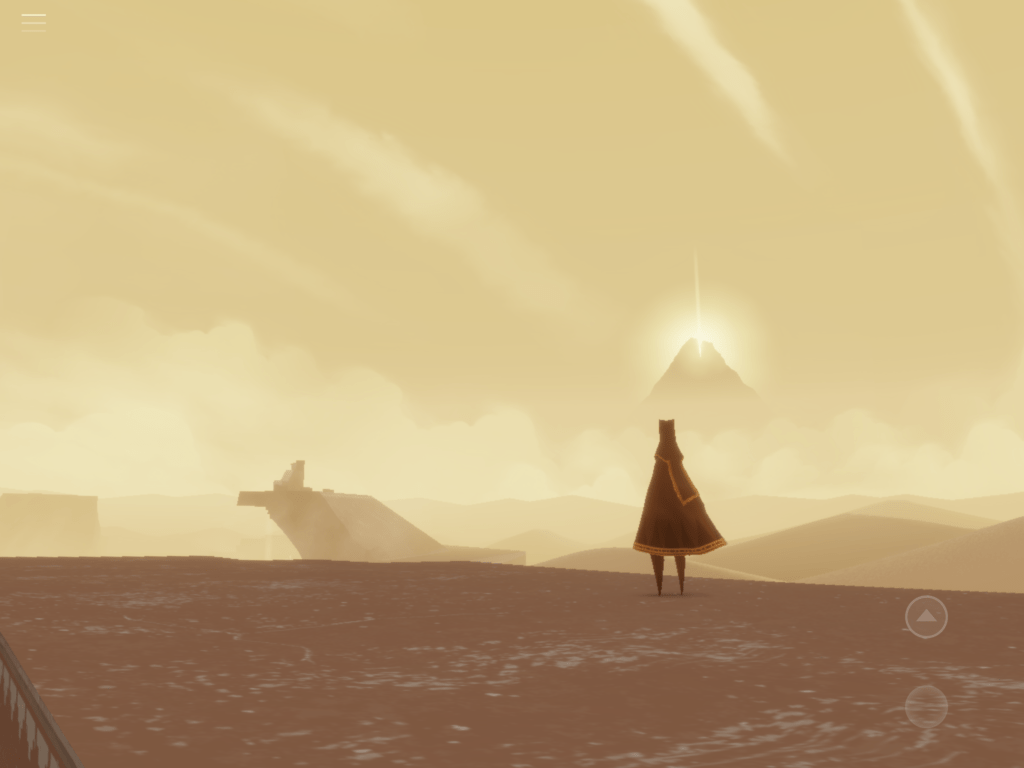
Overall, I wouldn’t change much about this game. The only suggestions I would make would be adding some clarity in the beginning to make the learning curve less steep. It took me a while to realize that I needed to interact with things that were illuminated with light, especially because sometimes the light was hard to distinguish from everything else. Finding a way to visually differentiate what the player actually interacts with in the earlier levels might avoid some of the feelings of being completely lost that I experienced in the beginning. Additionally, I would have loved some way to ask for help. That could be an info button that provided a bit more info on what the game is about and how it worked or some sort of hint mechanism where stuck players can be guided towards the correct part of the scene. It was a bit stressful feeling like I was alone in the game with only my own abilities to figure out how to advance through the game, but perhaps that is an intentional choice by the game designers.
